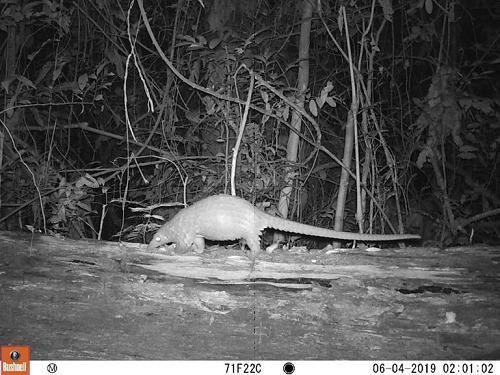Franklin Simo Talla
Other projects
27 Feb 2020
Pangolin Population Assessment in Forest Vs. Savannah Habitats: Improving the Effectiveness of Camera-Traps Used to Monitor These Species
20 Aug 2024
Empowering Communities for Pangolin Conservation: Innovative Monitoring Techniques and Sustainable Practices
This project aim at documenting with pictures pangolin species that occur in the Mpem et Djim National Park using camera traps; giving a relative abundance of pangolin species and their occupancy informations between the forest and the savannah area in both the dry and the rainy season in the Mpem et Djim National Park; developing a distribution map of the pangolin species in the study areas, this will contribute in mapping out pangolin strongholds and areas in which to focus pangolins conservation efforts; giving and approximation of the encounter rates of signs and the detection probability (using camera traps) of pangolin on their assumed pathway (dead trees with termites and signs of pangolin activities) in the Mpem et Djim National Park; and establishing any correlation between the detection probability of pangolin with the camera traps and the distance from protected area settlement edges, distance from the nearest main water body.

White-bellied pangolin photographed on logs.
For any comprehensible conservation and effective management action to be adopted for a species whose population is facing decline throughout its distribution range, accurate knowledge of population densities, distribution and their habitat preferences have to be known (Akrim et al., 2017, Cassey, 1999). Conservation efforts for Pangolins especially in Central Africa are hampered by the lack of information on their populations, natural history, threats, and the wildlife trade. Since pangolin species are rarely observed due to their secretive, solitary, burrowing and nocturnal habits, there is not enough research on population densities or global population (CITES, 2000); in addition, they may occur at a very low densities.
African pangolins are currently under very strong hunting pressure as a result of the drastic decline of their Asian counterpart. These animals are subject to a high demand for their meats considered a luxury meat and their scales widely used in traditional Asian medicine. The combination with poverty in rural areas of Africa makes it a lucrative and profitable target for poaching.
The overall aim of this study is to provide reliable information on pangolins population using camera traps in the Mpem & Djim National Park, Cameroon; according to the habitat type (forest vs savannah) and the seasons. This data will be useful in attempts to extrapolate Pangolin population trends in similar conservation situations across Cameroon. In addition, as pangolins have become very rare, it is now crucial to identify areas where a large population of them still exists in order to focus conservation efforts.